If you've ever been tempted to save a few bucks by buying a cheap, low-quality power supply, don't worry; you are not the only one. It is something that all of us who have ever assembled our own PC by parts have gone through.
But it is a very serious mistake that should be avoided, since it is a fundamental component in our team.
At the end of the day, he is in charge of ensuring stability to the entire system.
Therefore, in this article we show you the best power supplies on the market and what are the factors that you should look at before making your purchase.
Basic range: cheap power supplies
As we mentioned, we should not save too much when buying a power supply, since it largely depends on the overall health of your computer.
But we are aware that not everyone can afford to spend 100 euros on this component.
So if your budget is very low, you can choose one of these inexpensive power supplies.
These models represent the minimum quality required in any gaming PC. Below these prices we do not recommend buying any source.

Aerocool LUX 550W
Among the most economical energy certified sources we find this Aerocool Lux. Specifically, it is an 80+ Bronze source with efficiency of up to 88% when used at half load.
This Aerocool model also has an improved bottom deck over previous sources. The new system allows up to 30% more air to pass through, ensuring lower operating temperatures.
Another point in favor is that as long as the load does not exceed 60%, the fan remains at 800 rpm (revolutions per minute), the lowest possible speed. But when you push your rig with more demanding games or programs, this level can go up to 1,700 rpm.
It is semi-modular and the cables have a flat design, which makes life much easier when organizing the interior of our tower.
It is available in 550w, 650 and 750w versions.

NOX Urano VX 650W
For those who are building a modest PC, this ATX font is a good choice for less than 50 euros.
It is 85% efficient in real-life environments and carries the 80 Plus Bronze seal of guarantee, so we can rest assured that most of the energy will be used.
Its 120mm fan is controlled by PWM to adapt the speed to which the PC requires at all times. It also has a fairly quiet design.
Overall, this is a great value for money power supply for low to mid-range equipment.
It is available in 650W and 750W versions.

EVGA 600w
Here we have one of the most basic and affordable models from EVGA, one of the leading brands in the world of power supplies.
But don't let its low price fool you. It is still a highly recommended model for tight budgets and casual users who are not going to overclock.
Its energy efficiency is 80 Plus standard, the lowest of all, although for its price it is something to be appreciated.
It has a continuous power system, to avoid unwanted spikes, and various high resistance protections for overvoltages, short circuits, low voltage and other possible energy problems.
The fan has sleeve bearings and offers the Intelligent Auto Fans function, which controls the revolutions according to the needs of the equipment.
In addition, it has a 3-year warranty. Something that provides a lot of peace of mind knowing that you are covered at all times against possible malfunctions.

EVGA 600 BR
We go with another EVGA model, this time from the BR series.
It is a very interesting option for low-mid-range equipment, and one of the best choices for those looking for an 80 Plus Bronze energy efficiency certification at a moderate price.
The EVGA 600 BR incorporates several improvements over the 600W we reviewed above.
In addition to being 80 Plus Bronze certified, as we have already mentioned, it provides an output of 50A on the + 12v rail and stays cooler: up to a maximum of 30º.
The warranty is 3 years and the estimated operating life is up to 100,000 hours.
The fan is based on a long-lasting sleeve bearing system that offers remarkably quiet operation.
Best value power supplies: Mid-range
In this price range we find the best power supplies for quality-price, those in which every user who takes the stability of their equipment should be set.
They are ideal for mid-range computers, around 800-1,000 euros.
In general, these models offer good performance for a moderate price, and are suitable for non-demanding overclocking.

Seasonic S12III 550
The SeaSonic S12III 550 is one of the best sources you can find for value for money.
It has a power of 550w, which may seem a little low, but in reality it is more than enough for most computers that mount a single graphics card. But if you want more, there is also the 650w version.
It is 80+ Bronze certified, with efficiency levels between 82% and 85% regardless of the load level at which it operates. A stability that very few sources on the market can boast in this price range.
Its build quality is excellent. It has flat cables of great resistance and long enough to be installed in any configuration (yes, it is not modular).
The entire S12III series features LLC resonant converter design, which results in lower electromagnetic interference.
The warranty is 5 years, which gives us an idea of the reliability of this model.

Cooler Master MasterWatt 650
Cooler Master is better known for its cases and cooling systems than its fountains. But with this MasterWatt does a great job, which makes it a strong alternative to other more expensive products.
Specifically, it has two characteristics that make it stand out from its more direct competition.
For starters, this is a semi-modular source, so some cables can be removed to save space inside the case.
And secondly, it has a semi-passive ventilation system. With loads of up to 15% (that is, in day-to-day tasks) the fan does not rotate, something that guarantees a practically silent operation.
Apart from this, it is certified 80+ Bronze, a great current stability thanks to its double DC-DC forwarding design and fans with sealed LDB (a liquid dynamic mode) bearings.
And if that weren't enough, the warranty extends to 5 years.

Be Quiet! System Power 600W
This source offers great performance between power and low noise level.
And it is that if Be Quiet! it is precisely for manufacturing very quiet components. Something that in this case achieves it thanks to the design of its 120mm fan with temperature control.
Under the chassis we find a highly reliable platform from Channel Well Technology, one of the best manufacturers of internal drives for power supplies. It is semi-modular and its materials are of excellent quality, including its Elite capacitors.
It also stands out for its double + 12v rail and its DC-DC converter, which provide quality current on all rails and in any circumstance, both at low and high loads.
Energy efficiency reaches 89%, which is worth the 80+ Bronze certificate. And the temperature is always kept at bay, below 50º even at maximum power.
The version that we link here is semi-modular, but if you want to save a few euros it is also available in a non-modular version.
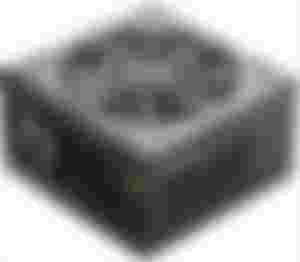
EVGA SuperNOVA 550 G3
This EVGA Supernova 550 G3 is a fully modular ATX power supply and is 80Plus Gold certified, with an efficiency exceeding 91% in certain situations.
It is manufactured by Super Flower, with high quality materials and Japanese capacitors. They stand out for its great voltage stability and wave control, first class despite not being a too expensive model.
In addition, your electronics have near-industrial-grade protection.
The fan is 140mm and works by means of a double bearing system. This, together with the ECO control system, which allows you to choose between different cooling modes, means that the noise it produces is practically zero with the computer at low and medium loads.
It offers a 7-year warranty and for its price it is really difficult, if not impossible, to find another product to match.
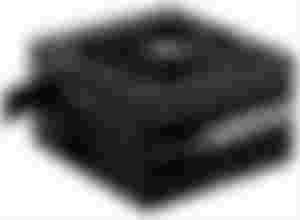
Corsair TX550M
Corsair's TX-M series stands somewhere in the middle within the company's catalog, offering a multitude of improvements over its most basic models but without being prohibitively priced or offering features that are not beneficial to average users.
It operates at a continuous temperature of 50º and offers 80 Plus Gold certification. It is based on a platform manufactured by Great Wall, with highly resistant Japanese capacitors.
Its wave oscillation is really low for a PSU of this price.
The cooling system, however, is not the best we can find. The fan is of a simply acceptable quality, and does not offer fanless function. This is why the fan is always spinning, even at low load levels.
Of course, the noise level is not too high, so this does not have to be a problem either.
It comes in a semi-modular format, which means that some cables that you don't use can be removed, leaving only the most important ones fixed.
Power supplies high-end
A truly powerful computer will never be without a power supply that is up to the task. It would be as if we bought a Ferrari and then skimped and put the cheapest (and worst) fuel possible.
Therefore, if your computer costs from 1,000 or 1,200 euros, it is a good idea to take a look at these recommendations.
And if you are going to overclock to a high level, more than a recommendation it is an obligation: do not leave the health of your entire PC in the hands of a mediocre source!
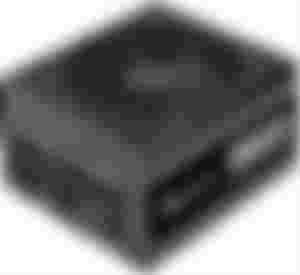
Corsair RM650
Corsair is one of the best brands of power supplies on the market, although it is true that within its wide range you can find quite discrete units.
But that's not the case with their RM series.
We are facing a line of fully modular ATX-type sources, built with high quality components, among which their 105º C capacitors stand out. They are also 80 Plus Gold certified.
This particular RM650 operates at a temperature of only 50º at full capacity and has a highly efficient ripple suppression system.
It has a fan mode without revolutions, thanks to which the blades do not activate while the load is at low or medium level.
Therefore, while we carry out the most everyday tasks, such as surfing the Internet or working with office software, the font becomes completely inaudible. And even when it starts working, the noise level remains surprisingly low.
The manufacturer's warranty extends to no less than 10 years.
Therefore, if you are wondering which power supply to buy at a reasonable price to get excellent performance from your equipment, this is the answer.

Seasonic 650FX Focus Gold
Here we find another unit from Seasonic, one of the most reputable firms in the power supply sector.
The FX Focus is 80 Plus Gold certified efficiency, which is 87% to 92% efficiency. In addition, it is fully modular with a powerful ripple suppression system and good voltage stability.
It also stands out in the sound section, since it is one of the quietest sources you can find. It achieves this thanks to its hybrid fan control system, which has three modes: passive (up to 30% operation), silent (50%) and cooling.
Passive mode can be activated by pressing a button on the back of the source. When this feature is disabled, the source will prioritize temperature, and the fan will always be spinning (even at low speed).
Another of its weapons is the Fluid Dynamic Bearing type fan of high quality and resistance.
This model does not suffer even under the most adverse conditions, making it a great option for hot rooms or for towers located in tight spaces.
It has a 10-year warranty, which, together with its great efficiency, makes it a good investment that is very easy to recover in the long term.
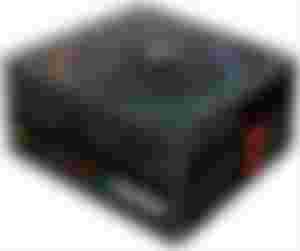
Thermaltake Toughpower Grand RGB 650w
This Thermaltake Toughpower Grand RGB is a really solid solution for those looking for a perfect combination of quality and aesthetics.
In addition to a very stable power supply, with good protection against electrical problems, it sports a customizable RGB lighting system more typical of more expensive models or others that sacrifice much more important aspects in exchange for this functionality.
By pressing a button you can choose the desired lighting mode from the five available, or if you prefer you can also completely disable this functionality. Obviously, it is a particularly recommended source for equipment mounted inside window boxes, in which the components are well visible.
It also stands out in its efficiency. And it is that although it is officially certified as 80 Plus Gold, it actually exceeds that threshold, reaching levels more typical of 80 Plus Platinum in certain cases.
In general it has an excellent build quality, with Japanese capacitors at 105º and a maximum operating temperature of 46º.
It has the Smart Zero ventilation system, which stops the fan when the load level is below 20%, although it also offers the option of leaving it spinning all the time.
Silent power supplies
Looking for the best silent power supply on the market? Then these are the models that we propose: quality and low noise level in equal measure.
It should be noted that some of the sources reviewed in other sections are also really silent, so they could well appear here. This is the case with Corsair's RM series or Seasonic's FX Focus, for example.
But we wanted to dedicate a specific section for models that shine especially for their silent operation.
Another aspect that you should keep in mind is that the power supply is only one of the elements that produce noise in the system. If you want to have a PC that is as silent as possible, you also have to ensure that the other components are as silent as possible: graphics card, CPU heatsink, case, fans ...
And one last recommendation: if you buy a higher power source than necessary you will also benefit from a lower noise level, since it will often run at a lower load, and therefore the fans will spin less.
Therefore, if the recommendation for a common computer is 550w or 650w, in this case it would be best to choose a 750w model onwards.
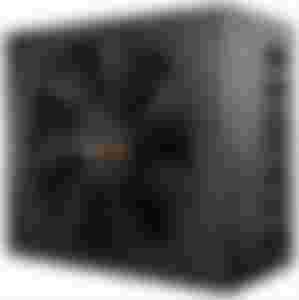
be quiet! Straight Power 11 650w
If there is a brand that is immediately associated with silence, that is Be Quiet! And although it is usually best known for its boxes and heatsinks, it also makes excellent power supplies for the sake of the most sensitive ears.
Its Straight Power line has just been renewed, and in its version 11 it introduces several improvements, among which the use of Japanese capacitors stands out, instead of the Chinese ones that version 10 used.
These sources, ranging from 400w to 1,000w, are equipped with Silent Wings 3 135mm fans, with liquid bearings and 6-pole motor for less friction and vibration. In addition, the inlet is designed with a funnel shape, which improves circulatory flow.
The cabling also helps maintain quiet operation: an innovative cable-free system is used on the inside, and on the outside it is modular, so airflow is not hindered as it exits the case fans. Achieve 80 Plus Gold certification
Of course, at high loads it is not as silent as you would expect, so if you have your PC in a very hot room or you are going to use it intensively, there are series that are a better option, such as the Corsair RMX.
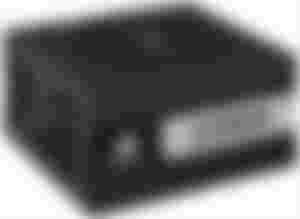
Corsair AX850
The Corsair AX series could perfectly appear in the category of high-end power supplies, as they are among the best models you can find on the market.
It is a semi-fanless unit, which means that at low workloads the fan does not rotate, with the consequent acoustic benefit. In particular, it does not activate until it does not exceed 500w, although above that figure it is still incredibly quiet.
The blades work through the dynamic liquid bearing system, and the different cooling profiles are regulated by micro-controllers, which guarantees greater precision.
With 80 Plus Platinium certificate, 105º Japanese capacitors and a ten-year warranty, with this source you can definitely breathe easy knowing that the stability of your PC is in the best hands.
It is fully modular and far exceeds the promised power, reaching almost 1,000 watts.
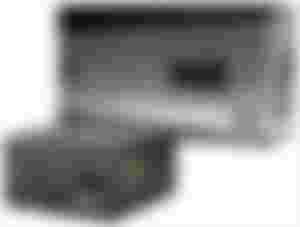
Seasonic Prime Titanium Fanless 600w
If you want to go one step further and go for a totally passive power supply, that is, without a fan, the Seasonic Prime Titanium Fanless series is an infallible choice.
There are those who are still reluctant to use this type of model, for fear of not having enough power. And not without reason; many old or low quality fanless fonts are only suitable for office computers, HTPC and so on, which are not going to be demanding.
But in this case we are talking about a source fully capable of feeding even the most demanding gaming PC, thanks to its extreme efficiency: it hardly lets any energy escape in the form of heat.
That does not mean that it does not produce any noise, since the electronic components also sound when working. But we can say that for most people, situated at a normal distance from their computer, this source is virtually inaudible.
To this must be added an almost perfect load regulation on all rails, a first-rate wave suppression system and good connectivity, with 2 EPS connectors that make it compatible with the most advanced motherboards and 4 PCIe connectors.
As if that were not enough, the warranty extends to 12 years, a period of time in which you have probably already changed almost all the other components of your PC.
SFX power supplies (compact)
The main limitation that ATX power supplies have, that is, the most popular ones, is that they can present problems to be mounted in small boxes, such as Micro ATX and Mini ITX.
To solve this problem, SFX (Small Form Factor) sources were born, capable of being attached to practically any equipment, since they occupy a very small space and facilitate air flow in small spaces.
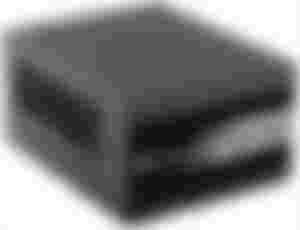
CORSAIR SF450
This model is the first SFX-type model launched by Corsair, and to be its first experience it could not have done better.
To do this, it has teamed up again with the manufacturer Great Wall, responsible for other of the best sources marketed by Corsair.
The result is a unit with dimensions of 100mm x 63mm x 125mm, great performance and surprising specifications in terms of efficiency, wave suppression, voltage stability and hold-up time, which is the time a source is capable of continuing to operate in the event of a power outage or sudden power loss.
As is usual in a source of this type, it is modular and its cooling system is first class, thanks to a 92mm fan with optimized blades to achieve good air flow and low noise.
It also has a semi-passive mode (which cannot be deactivated), and the increase in fan rotation speed when necessary occurs very gradually, which contributes to an even quieter operation.
It can be installed in an ATX or mid-ATX size tower, although it does not include an adapter and the cables are a bit short to install easily in a larger box.
It is available in 450w and 600w versions.
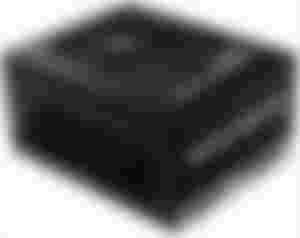
Enermax Revolution SFX 550W
Enermax presents a good quality compact power supply, with 100% Japanese capacitors, totally modular and with very robust and flat cables, for an easier installation.
Its efficiency reaches the 80 Plus Gold certification, although under small loads it does not use the energy as well as we would like. It does perform quite well at medium and high loads.
The fan is smaller than that of the Corsair SF450, and works by means of a bushing bearing, which makes it not the quietest source on the market, although it is not too noisy either. In addition, it has a semi-passive mode, thanks to which the fan remains immobile below 30% load.
Its + 12v rail is 45.8A in the 550w version and 54A in the 600w version, making it perfectly suitable for any high-end gaming system.
It includes an adapter for ATX boxes, so if one day you move to a larger team, you can keep the source, simply by installing said accessory.

Silverstone SX550
The Silverstone SX550 is an SFX type power supply aimed at users with modest budgets, and who do not mind sacrificing some aspects in exchange for being able to mount a small format PC for a not very high price.
Among these sacrifices, the fact of being a non-modular model stands out, so it is not recommended for extremely small boxes.
On the positive side, in addition to its good price, we find a very good wave suppression system, a maximum operating temperature of 50º, which in practice and at normal ambient temperatures does not exceed 47º, and a maintenance time of 20º. , 1 milliseconds, a pretty high figure.
Its single rail + 12v is 45ª, so it is perfectly compatible with high-end graphics cards, especially from Nvidia, more efficient than Radeon.
The fan is 80mm and from around 400w it is somewhat noisy. But if your system doesn't demand that power, you can rest easy.
High power power supplies
750w or even 650w is more power than 90% of gamers could ever need. From there, only enthusiastic users who think of building a monster computer, with several graphics cards, demanding liquid cooling systems, oriented towards extreme overclocking, and so on will benefit from the extra power.
So, if you do not find yourself identified with that definition, it is better that you choose one of the cards mentioned in other sections. If you are otherwise one of those few mortals who needs such a power supply, here are the best suggestions.

Corsair AX1600i
The Corsair AX1600i is the best power supply you can buy today if you need a massive amount of power to run your PC.
It is an evolution of the already near perfect Corsair AX1500i, which marked a milestone in the segment of large capacity sources. As with the former, its most recognizable feature is the digital design of all its circuits, which allows its operation to be monitored and adjusted using Corsair Link software.
It is 80 Plus Titanium certified, the existing maximum, and comfortably exceeds this standard, to the point of becoming the most efficient model ever seen in this power segment.
It is totally modular, and the quality of its materials is more than remarkable. Also its low noise level is worth mentioning, thanks to its semi-passive cooling and its 140mm fan with liquid dynamic bearing.
It has a 10-year warranty, and as extras it includes several stickers to customize the color of the font and a bag to store the cables that we do not need.
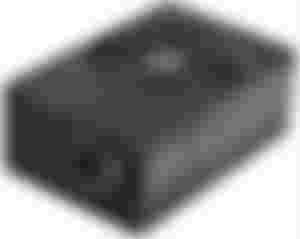
EVGA SuperNova 1600 T2
The EVGA Supernova T2 series is, along with Corsair's AXi, the best option on the market when it comes to high power sources.
Until the release of the Corsair AX1600i, this Supernova 1600 T2 was the clear dominator at this power level. And although it has been surpassed by that, it is still an excellent choice, even more so considering that it is more than 50 euros cheaper.
The EVGA Supernova T2 platform, once again made by Super Flower, is analog rather than digital, lacking the monitoring and control capabilities of Corsair's product. But it is also one of the best ever designed.
Like its main competitor, it offers Platinum-grade efficiency, a semi-passive ventilation mode, and uncommon voltage stability, which will allow your rig to run smoothly in all conditions.
Its 1400mm fan is a double ball bearing, which, although it produces a little more noise than liquid systems, also withstands high temperatures better.
In fact, it is one of the preferred sources for Bitcoin miners, whose computers work for hours and hours at maximum power, something that speaks very well of the quality of this unit.
As is to be expected in a product of this category, it is 100% modular, and its warranty is extended to 10 years.
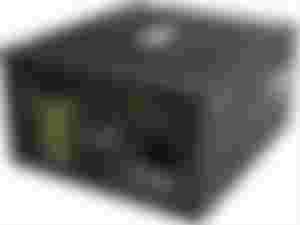
Seasonic PRIME Ultra 1000w Platinum
If you are looking for a powerful power supply but you think that the two previous 1600w models are too big for you, this Seasonic Prime Ultra 1000 may be your answer.
It offers an 80 Plus Platinum certificate, one notch below the Titanium of the Corsair and EVGA options, but still offers a more than remarkable level of efficiency, especially at loads less than 20%.
The ventilation profile is quite relaxed, which together with its dynamic liquid bearing system and its semi-passive mode (optional) makes it a fairly quiet source. Although, yes, transitions to higher speeds are sometimes a bit noisy.
It is equipped with a single 83A + 12v rail, with outstanding load stability and capable of providing almost 1,000w of operation by itself.
Enjoy all kinds of protections so that you can use your equipment intensively without any worries, and its guarantee is no less than 12 years. A record in the sector!
You can also find a version with a Titanium certificate, although in our opinion it is the Platinum version that achieves the best value for money.
What power supply do I need?
The choice of the power supply is one of the aspects that are most often overlooked when it comes to buying the components of our computer. Often the only factor that many look at is the number of watts, thinking that having enough power is enough. However, this is only one of the factors to look at before buying a power supply, and if we opt for a poor quality model we can pay for it in the long run (or not so in the long run) suffering from instability, overheating or constant restarts, in addition to a significant shortening of the useful life of our equipment.
To shed some light on the matter and help you choose, we are going to explain how to choose a power supply that suits your needs and above all that is reliable, since there is no use having the latest graphics card on the market or the most CPU fast if we don't supply them with the “fuel” they need.
Once you are clear about the main factors to take into account, it will be easier for you to decide which power supply to buy according to your requirements and your budget.
So without further ado, this is our checklist for buying the best power supply:
Power: The number of watts matters....
This is the first aspect that we have to decide when we are going to choose a power supply. All the components that make up our equipment will obtain the energy they need to function correctly from this piece, so in general terms it can be said that the more powerful our PC is, the more powerful the power supply must be.
However, the graphics card is the part that most determines the voltage of the source we buy, since it is the component that needs the most power. Many graphics card manufacturers indicate in their specifications the recommended watts for each of their models, which can help you narrow your choice.
Most graphics usually move between 400w and 600w, although it is always a good idea to add some power to have enough margin, since in the future we can connect more devices to our PC or update a component and replace it that has a higher consumption .
Rails and amps.
In addition to the total power of the power supply, it is also very important to know how this power is distributed. The sources have several rails, through which the different voltages run. Normally there are three: 3v, 5v and + 12v.
Graphics cards, as we have already mentioned, are the components that need the most energy, so they are fed by the most powerful rail: the + 12v rail. For this reason, we have to pay attention to the amps that this rail in question delivers. The more powerful graphics, the more amps we need. Thus, for a basic gaming configuration, we will have enough with 24A, while for more enthusiastic systems or for SLI configurations, we may have to raise that figure to 45A or even more.
The age of the graphics also influences here, since the newest ones always seek maximum energy efficiency. That is why it is not strange to find high-end models that consume much less than other much more basic models, but that were on the market longer.
Continuing with the + 12v rail, we can find sources with a single rail of this type and sources with two or more, in which the power is divided between several rails. That you choose one or the other will not affect the performance of your PC, although if you are going to acquire a medium-high power source, let's say from 550w, it may be a good idea to opt for a multi-rail, since in case Overloads or short circuits are safer and damage is not concentrated in a single rail.

Efficiency: Look for a model with 80 Plus certificate.
Another important factor is the efficiency index, or what is the same, the percentage of energy that actually reaches the system and is therefore used. Power supplies that pass an efficiency test of at least 80% get a certificate called 80 Plus, and that can be from 80 Plus dry (the lowest, with just 80% efficiency) to 80 Plus Titanium , existing in between the 80 Plus Bronze, 80 Plus Silver, 80 Plus Gold and 80 Plus Platinium.
*(When installing our power supply we will find many cables.)*
Units that do not meet this figure lose a lot of power along the way, which translates into more heat, more noise, more wear and tear on components, and a higher electricity bill. Therefore, investing in a certified efficiency power supply can pay off in the long run.

There is none that reaches 100%, and it must be taken into account when buying so that we are not deceived. If you see a 20 euro power supply with an efficiency of 90%, run away from it. Good and expensive power supplies go as high as 90% efficient, some around 95% at half load, but none go over 90 or 91% at full load. And those are not cheap at all - more than 100 euros for the 700 W.
Another important feature for their operation is whether they are active or passive PFC (Power Factor Correction). It is simply one more indication of their efficiency, since the passives usually give around half their nominal power - with which half of the consumed power is lost in the form of heat -, they consume more than they should, they produce more environmental and electrical noise, and generally does not usually compensate for the low cost.
Passive PFC sources generally do not have protections for the electronic components that they have to feed, so in areas with constant blackouts they are a danger to our pockets. In addition, having such a low efficiency, the electricity bill at the end of the year can rise another 10 to 20 euros due to this, so I recommend that you do not put your eye on any of them and that you invest in one with active PFC.
Good quality and varied connectors
You must make sure that the power supply has the appropriate connectors for your system, although the truth is that today the vast majority of models have enough connectors for any configuration.
The most important connectors are the one that goes to the motherboard, with 20 or 24 pins, that of the processor, which in turn is also connected to the motherboard, with 4 or 8 pins, and that of the graphics card (6- 8 pins), although in the latter case it is not always necessary to connect it.
Apart from that, it is always a good idea to check the number of SATA or Molex connectors, which can be used to power hard drives, SSD drives, CD players or other devices.
Dimensions and format: modular or semi-modular
Most fonts are in an ATX format, which will fit almost any ATX (full format) tower. Also in many Micro ATX, although in this case it is recommended that you pay attention to the dimensions of one element and another, so that you do not have any setbacks.
Especially, it is convenient to take a look at the depth of the source, since although the other measures are usually standardized, it can present significant variations between models.
But if you really need a compact font, you should opt for the SFX format (small form factor, for its acronym in English).
Another aspect regarding the format is whether we want a modular or non-modular power supply. Modular ones are more expensive, but they allow us to add or eliminate cables depending on whether we need them or not, so they are highly recommended if we do not want to deal with a significant mess of cables every time we open our box. Plus, fewer cables also mean better ventilation and less dust accumulation.
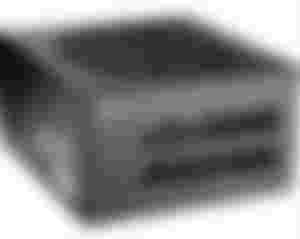
On the other hand, this means adding one more connector to each cable, and therefore an extra barrier of resistance between the unit and the component to which it is connected and one more part that may fail or overheat. But generally, performance will not be affected, so if the budget reaches you, we recommend that you get a modular type.
Best brands of power supplies
Last but not least, we should limit our choice to a number of well-known brands, the quality of which is beyond doubt. Although in other components we can cut some budget and opt for not so well known manufacturers, in the case of power supplies this is a very dangerous practice.
This does not mean that all the models of the most recognized brands are going to be recommended, since within each one there are different series with different characteristics and materials. But following the previous parameters and opting for one of these brands we will have a plus of confidence when making our purchase.
We do not want to limit brands to a closed and exclusive list, but below we offer you one that can serve as a guide:
Seasonic
Corsair
Antec
Cooler Master
EVGA
Thermaltake
XFX
Enermax
As you can see, the choice of the power supply is not something to be taken lightly, and it is influenced by more factors than it might seem at first.
Things to consider
Electronic components wear out while they are used like any other product, but when they are taken out of their normal working area they degrade much faster. While a 300 W source could provide enough power to feed 350 W or more, it would suffer rapid wear and tear that would eventually stop working in days, weeks or months. So there are a few things to keep in mind when buying a power supply.

Geographic location and continued use.
This is something that not many people notice, although it is terribly important. When using a power supply in hot areas, the power consumption increases due to the decrease in efficiency due to higher ambient heat, so the power supply may not give the expected performance. This also happens if you are enjoying GPU-intensive games for hours, where heat build-up around the source components decreases their efficiency. Especially if the computer and its components are not properly cooled, or you have it wedged against the wall or a small hole.
The loss of efficiency leads to the source having to consume more watts to provide the equipment with the necessary levels of power so that we can continue to use the equipment. The (almost) technical and simplified explanation is that heat increases the resistance to the passage of electric current through conductive metals.
If you have a 500 W source with an efficiency of 80%, you can use it in a computer that consumes up to 400 watts without problems in the components of the same, giving room for efficiency decreases. It is usually the usual thing in computers with a graphics card in the style of the GTX 660 at full load, although AMD's tend to consume more than Nvidia's and you have to take that into account. That power supply would give that efficiency at room temperature of 22 degrees, but if you used it a lot it would start to lower its efficiency, which would mean that an average equipment that consumes 370 W would be extracting more power from the source than recommended by just lowering its efficiency at 70 or 75%.

A note on overclocking.
To raise frequencies you need power supplies that have their 12V output as stable as possible. Because of how the transformation of alternating current from 220 V and 50 Hz to continuous 12 V works, capacitors of the highest quality are required, as well as the rest of the components such as the coils. That is only achieved, I am afraid, by spending more euros than you might want, but from 100 to 120 euros you can find good sources for increases, although it is advisable not to skimp on the price of the source for these tasks.
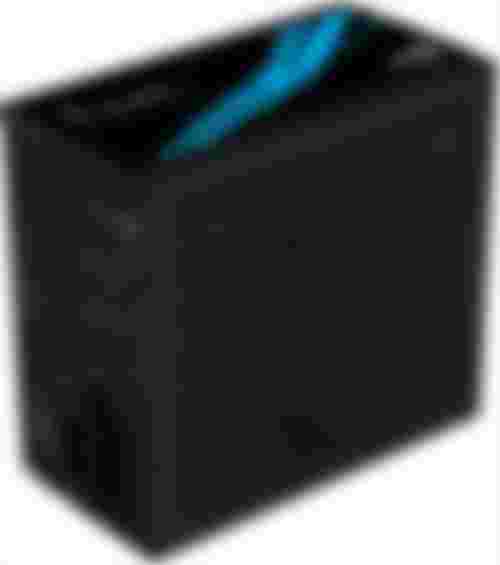
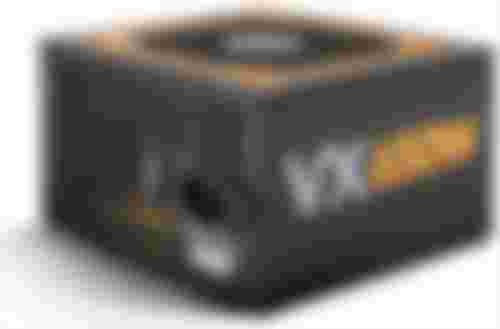
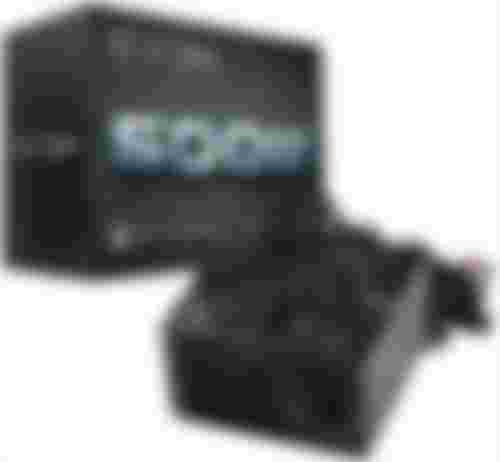
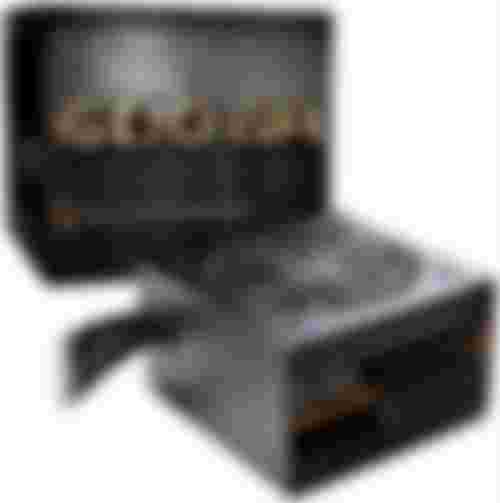
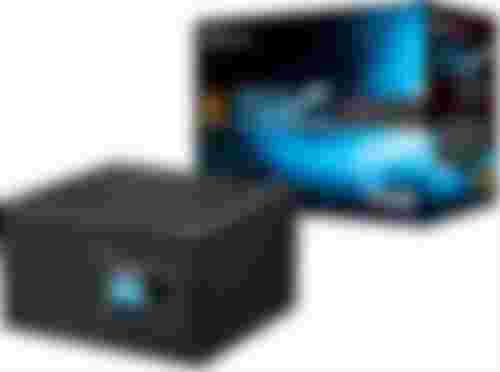
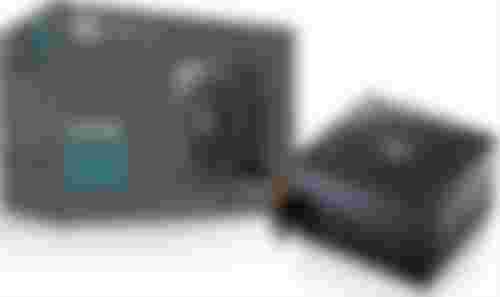
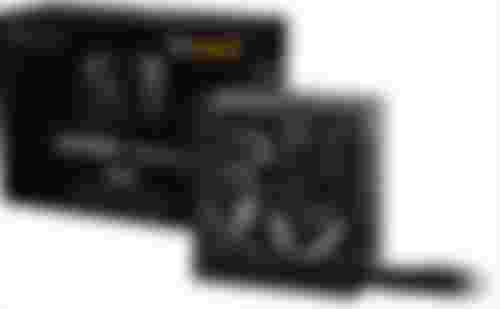
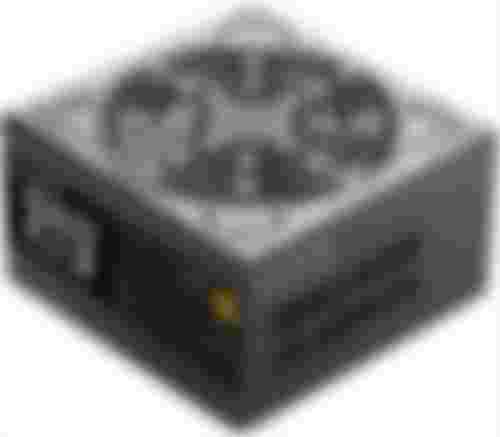

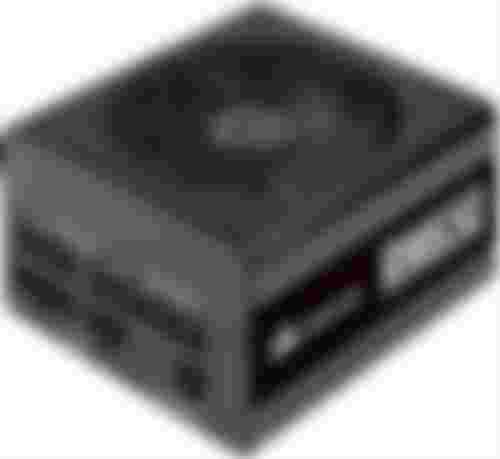
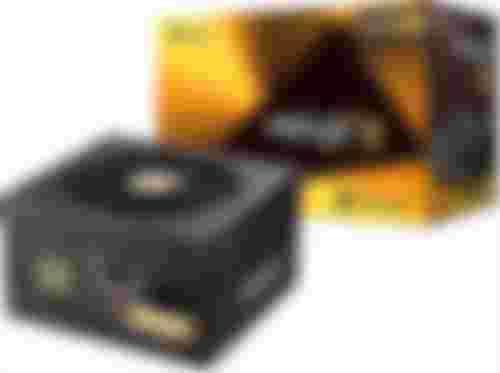
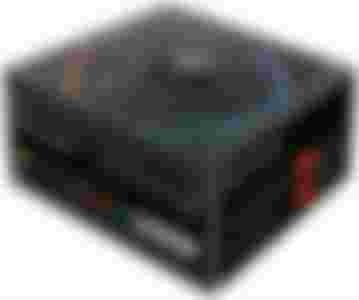
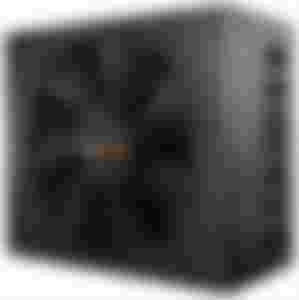
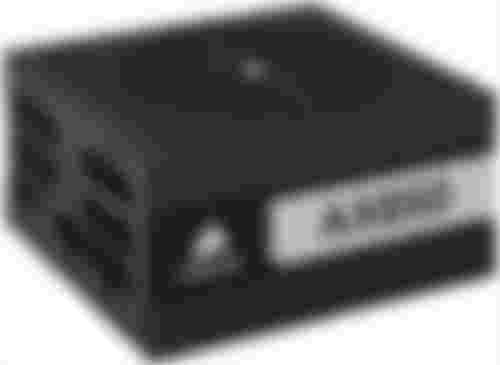
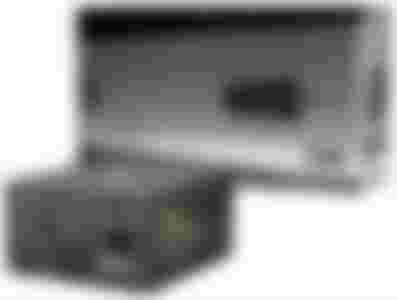
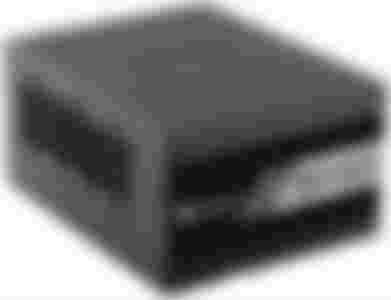
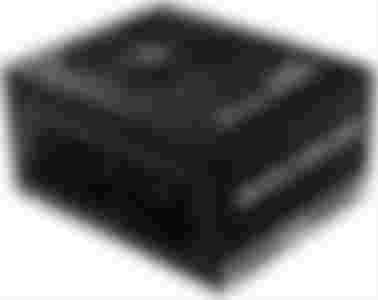

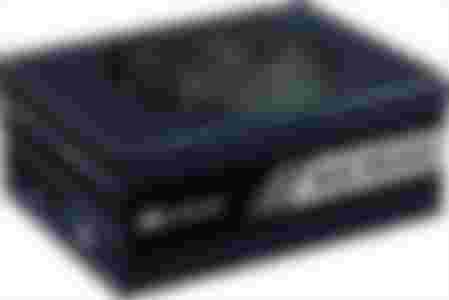
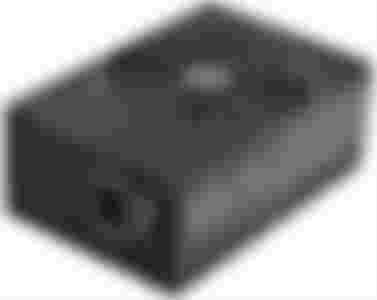
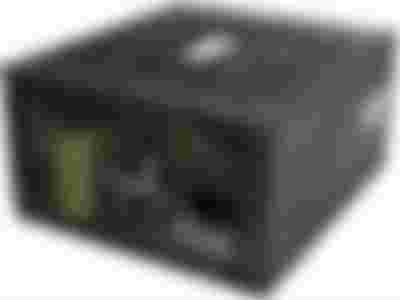


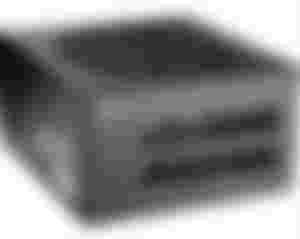

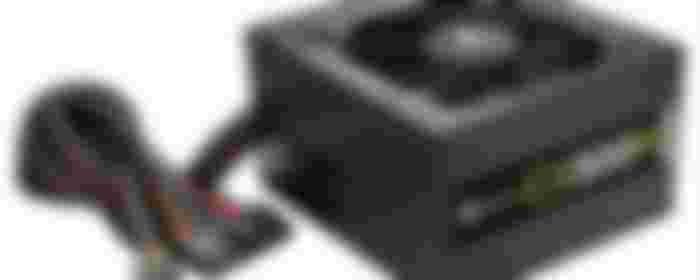
i use old vintage power supplies, which are available from $10 to $20 but they offer far better realibility than modern low-end power supplies.
the brands i recommend are Fortron Source / FSP, Chieftec, Enermax, Lite-ON, Corsairs, Gigabyte. even if they explode at you, they dont bring anything with them to the heavens.